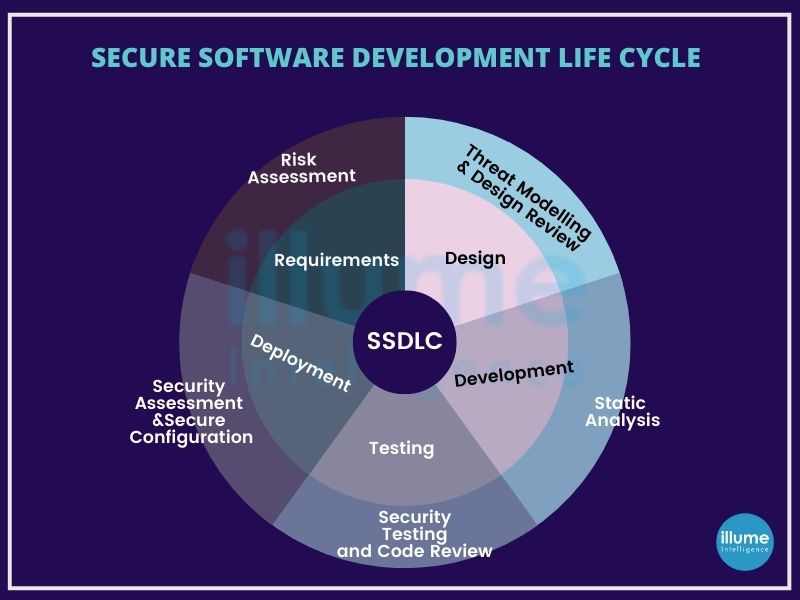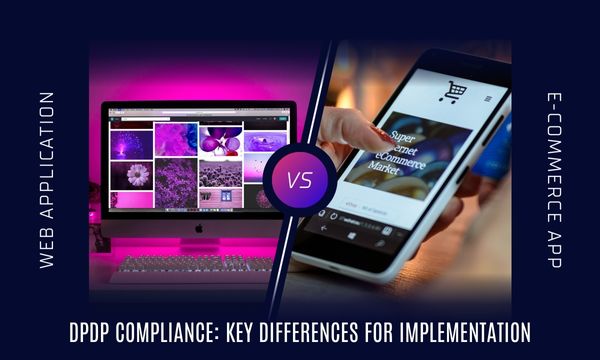Assuring Applications reliability by Integrating security into the design to delivery phases of the Software Development Life Cycle
Software and applications play an important role in business these days. Businesses use these for their daily operations and customer dealing. The slightest miss in the security can bring a mountain of miseries to the business.
Secure SDLC (Software Development Life Cycle) or SSDLC process takes care of the entire software development life cycle with the security protocol keeping the system protected from internal and external threats.
What is SSDLC?
SSDLC (Secure Software Development Life Cycle) is a process framework used by organisations to build secure applications. This defines the integration of security into the SDLC.
Earlier the organisations used to do the security tests only as a part of testing at the end of the SDLC. Resulting in the late finding of the bugs that may delay the timeline to deliver the application. This leads to incomplete findings of the bugs, flaws and vulnerabilities.

How does SSDLC work?
Secure SDLC involves integrating security testing and gap analysis into the existing development process. Examples may include ensuring the security of architecture while designing architecture and including security risk factors in the initial planning phase.
Secure SDLC is not intended to completely eliminate traditional security checks but to include security in the scope of developer responsibilities and help them to build secure applications from the beginning.
Security is added to each phase of the SDLC to ensure the security of an overall application. It is done by adding security needs in every stage to ensure that the entire team takes security seriously from the beginning.
Conducting Gap Analysis is important for the assessment of the defined areas of concern and security deficiencies to get the outcome flawless.
Why Is Secure SDLC Important for your organisation?
According to the researchers, it is six times costlier to fix the bug during implementation rather than a bug found in the design phase. According to IBM the cost of fixing bugs during the testing phase is 15 times more than fixing them in the design phase.
Implementing the security testing across the SDLC will help in the early detection of vulnerabilities. Activities like Architecture Analysis, Code Review and Penetration Testing are included in the SDLC to make it secure giving the following advantages to the organisation.
1. Secure Application - The delivered software is more secure as the security is monitored at every stage.
2. Early detection - Resolving of the bugs at the moment they are located in the SDLC itself.
3. Trust in Application - Clients and Stakeholders will have more trust in the business
4. Reduced Cost - As the flaws are fixed in the initial stages the cost is also saved.
5. Reduced Risk - The application is secure from external and internal business risks
Manual or Automated Security Testing?
When it comes to testing, many teams rely on Automation for quick and accurate bug findings. These tools succeed to some extent but in critical situations, only the experienced tester can locate the issues.
Whereas on the other hand manual testing is accurate, effective, and validates but the time and investments are too high.
It is always advisable to combine both Security tests and use them effectively.
How can I get started?
The SSDLC can be inculcated in any development process in two ways
A. Training an Internal Team
1. Educate your team on following the best secure coding practices and available frameworks for security
2. Perform architecture risk analysis at the beginning
3. Consider security in all the phases
4. Use code-scanning tools
B. Get Help from the Outside
You can always avail the help of professionals as many organisations are offering the SSDLC as a Service. You will get a complete team of professionals that will work with your internal team to make your project a success.
Are you still confused about how to proceed with the security of your Application development? You can always consult Illume Intelligence’s professionals to get insights and support on streamlining your SSDLC.







